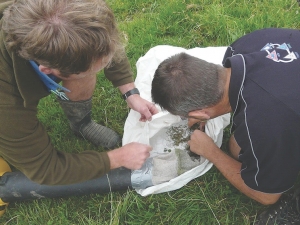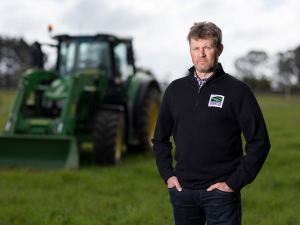Focus of the day was control of clover root weevil and delegates had the chance to collect their own sample of weevils, and with it, hopefully, a host of parasitic wasp eggs or larvae that would establish as an effective biocontrol of the pest on their farms.
Weevils infested with parasitic wasps were released at field day host farmer Cliff Bolger’s farm near Mataura in 2010 and have since built up to the point where 70-80% of adult weevils tested were found to be ingested with the wasp prior to the field day.
Bolger says the decision to have 2500 wasp infested weevils released onto his farm was an easy one. “It’s been a great initiative by Environment Southland…. It appears to have been successful and I hope today everyone gets enough weevils.”
Environment Southland senior biosecurity officer Randall Milne says the only way to tell if weevils are infested with wasp larvae is by dissecting the weevil under a microscope. “You can’t tell by eye,” he told Dairy News.
Consequently before weevils are collected for redistribution a sample is taken and assessed for infestation. “We’re only harvesting weevils from paddocks where the wasp has built up in number too.”
At the Southern Field Days at Waimumu, shortly after the field day at Cliff Bolger’s, Milne and colleagues were giving away pottles of infested weevils to farmers calling at the Environment Southland stand. By early on the second day of the show all 107 had been snapped up.
“We had a couple come through who said they weren’t in a known clover root weevil area so they didn’t take a pottle because they didn’t want to introduce the pest but otherwise farmers were really keen to take them.”
Milne says weevil damage to pasture – adults notch clover leaves while the larvae do the real damage destroying the root system – is widespread in the region now. Only the Catlins, a few coastal regions and the far west around Tuatapere are still free of it.
“It’s a very good hitch-hiker on feed and machinery and things like that,” he notes.
“We’ve been monitoring it since 2009 and it’s very widespread now. We’re finding it throughout the region.”
At the Waimumu field days a farm advisor had reported seeing it in pasture near Te Anau, an area previously deemed free of the pest, he added.









